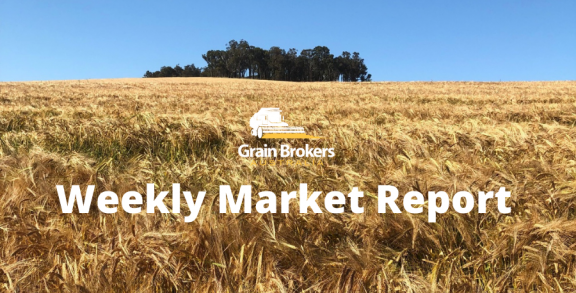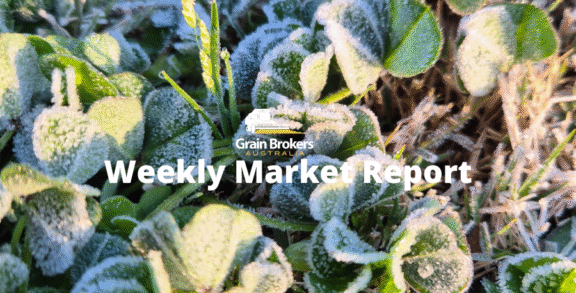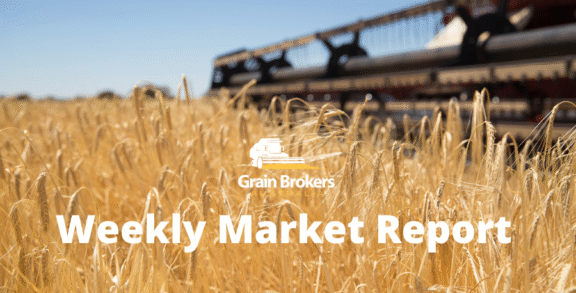
The global wheat market was thrown on its head last week following the release of the latest World Agricultural Supply and Demand Estimates report. The USDA binned the measured approach and took the knife to wheat production estimates in many of the world’s key exporting nations.
The trade has become accustomed to surprises from the USDA, but it has been more for its delayed reaction to production signals across the globe. That can’t be said of this month’s report, and global markets reacted accordingly.
The Chicago Board of Trade December 2021 wheat contract settled US$3.58 per metric tonne higher on Friday to finish the week at US$284.58/MT, the highest close on a continuous chart of the most traded CBOT wheat contract since February 2013. That was 6.8 per cent higher than the previous week’s close of US$266.48/MT, and 24.2 per cent higher than the most recent contract low of US$229.19/MT set on July 9.
The Paris based Euronext December wheat futures set fresh contract highs on Thursday following the release of the WASDE report and again on Friday as the trade continued to digest the enormous reduction in global production. The benchmark December contract closed the week at €254.25/MT. That was 9.5 per cent higher than the previous Friday’s close of €232.25/MT and 27.4 per cent higher than the most recent contract low of €199.50, similarly set on July 9.
Unsurprisingly, Black Sea export values have been on fire. Russian 12.5 per cent protein closed the first week of the month at around US$270 free on board for September shipment. Last Friday, the same wheat was quoted at around US$295FOB, with 11.5 per cent protein offered at a US$10 discount and feed wheat another US$10 lower. Many exporters, traders and domestic consumers entered the harvest period on the short side, but the dramatic drop in the production outlook has spawned a mad scramble for cover.
According to the USDA, the month-on-month global wheat outlook for 2021/22 is for reduced supplies, lower consumption, reduced trade, and smaller ending stocks. It slashed global production by 15.5 million metric tonne, or almost 2 per cent, to 776.9MMT with significant production downgrades in Russia and Canada. This puts the current world wheat estimate just 1MMT higher than 2020/21 production.
A month ago, analysts were talking up the Russian crop with estimates of 85MMT and higher commonplace. But a month is a long time in grain markets, and last week the USDA reacted to news of disappointing early harvest yields and a lower-than-expected planted area by cutting 12.5MMT, or 14.7 per cent out of projected output. This pegged the Russian wheat crop at 72.5MMT, a number even the most pessimistic would have thought unlikely.
All of the production decrease was in the winter wheat crop, with the USDA actually adding 1MMT to spring wheat production, taking it to 22MMT despite the dry start to the crop cycle. Winter wheat production was reduced by 13.5MMT, with the average yield forecast at 3.32 metric tonne per hectare compared to 3.77MT/ha in 2021. The area planted to winter wheat was cut by 900,000 hectares to 15.2 million hectares compared to July estimate.
The plight of the Canadian farmer has been well documented in recent months, with the drought across the Prairies the worst in living memory for most. The production drop was therefore totally expected, with the wheat crop now forecast to be the lowest since the 2010 harvest. The USDA settled on output of 24MMT, 7.5MMT, or 23.8 per cent lower than their July number, but further cuts are anticipated as the early harvest ramps up, and the weather outlook remains dry for the later crops.
Other changes in the wheat production matrix were the United States 1.3MMT, or 2.8 per cent lower at 46.2MMT, Kazakhstan 0.5MMT, or 3.9 per cent lower at 12.5MMT and Turkey 0.5MMT, or 2.9 per cent lower at 16.5MMT. Ukraine saw an upward revision of 3MMT, or 10 per cent, taking its crop estimate to 33MMT, and the Australian crop was also increased by 1.5MMT, or 5.3 per cent, to 30MMT. The Argentinian number was left unchanged at 20.5MMT, but issues are emerging in that part of the world, and India remains on track for a record 108MMT.
In the European Union, it is not so much production, but rather quality that is the primary concern at the moment. Heavy and persistent rains have slowed harvesting in France and other European Union countries, leading to a much lower proportion of the crop meeting the milling wheat criteria. The main issue is test weight, with only 35 per cent of the French harvest-to-date making the 76 kilograms per hectolitre minimum. The Hagberg falling number results are satisfactory for now, but that could easily change if the rain continues to disrupt the harvest.
With lower global production comes the need to ration demand. But that will not be easy, especially with the potential corn supply issues as US production declines. The global wheat consumer has been on a just-in-time diet all year, thinking that worldwide output was increasing and ending stocks were building.
Well, that has all changed in a very short space of time. With global consumption set at 786.7MMT, it will exceed production by almost 10MMT. And despite some minor downward demand revisions, 2021/22 ending stocks are also forecast to decrease by nearly 10MMT.
On the global trade front, the USDA cut wheat exports by 5.7MMT to 198.2MMT, with Russia and Canada bearing the brunt of the decrease, down 5MMT to 35MMT and 5.5MMT to 17.50MMT, respectively. Countering those export falls were Ukraine up 2.5MMT to 23.5MMT, Australia up 1.5MMT to 22MMT and the European Union up 1MMT to take equal top billing with Russia at 35MMT.
How will the global consumer react? Will there be a rush to secure supplies or even build buffer stocks to ensure domestic supply and maintain social stability in some countries? A string of passes on global tenders last week suggests that many still have their head in the sand concerning global wheat production. But once reality strikes, and worldwide demand surfaces en masse, wheat markets could potentially gap even higher.
Call your local Grain Brokers Australia representative on 1300 946 544 to discuss your grain marketing needs.





